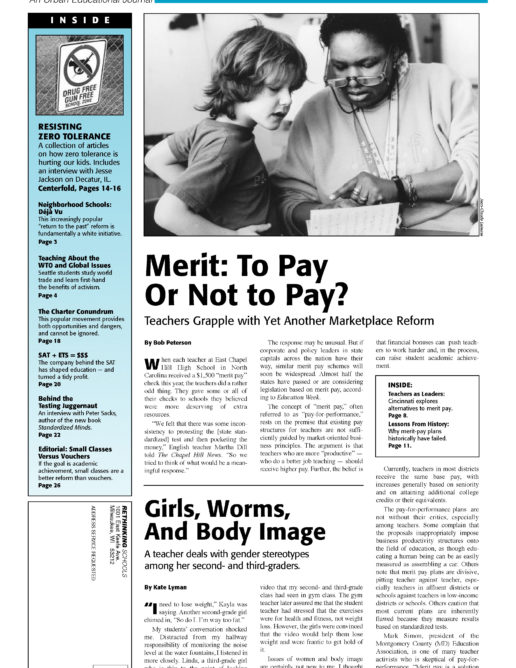Preview of Article:
Girls, Worms, And Body Image
I decided to start by learning more about the students’ knowledge and perceptions about gender. I divided the students into two groups and asked the girls to decide on 10 facts about boys/men and the boys to do the same in regard to girls/women. Before the activity, I tried to clarify the difference between opinions and facts, but the lists of “facts” revealed the futility of my attempts:
Facts about Boys/Men
(written by the girls)
1. Boys are selfish.
2. Boys are different than girls because of their body parts.
3. Men make their wives take care of the children and house.
4. Dads make the moms do the shopping.
5. Men get paid more than women.
6. Men get women just for their looks.
7. Men are mean and lazy and jealous.
8. Men are picky eaters and like their dinners when they get home.
9. Men and boys are bossy.
Facts about Girls/Women
(written by the boys)
1. They always complain.
2. They are too loud and picky.
3. They are sensitive.
4. Girls and women are better bakers than boys and men.
5. They are bossy.
6. Girls are always talking about boys and men.
7. Girls and women aren’t as smart as boys and men.
8. Girls are more jealous than boys.
9. Girls and women spend a long time getting ready and want to look pretty.
We discussed the “facts” as a group and tried to come to an agreement about which statements were indeed facts and which were stereotypes, generalizations, or opinions. The girls protested vehemently to the idea that boys and men were smarter than girls and women. They insisted, in fact, that the opposite was true.
Many students were reluctant to concede the veracity of some of the other statements. One student, Yer, for instance, argued, “I know for a fact that women are better bakers than men!” Anna countered that not only was her dad a good cook, but he also helped with the shopping and didn’t insist on his dinner on time.</p

